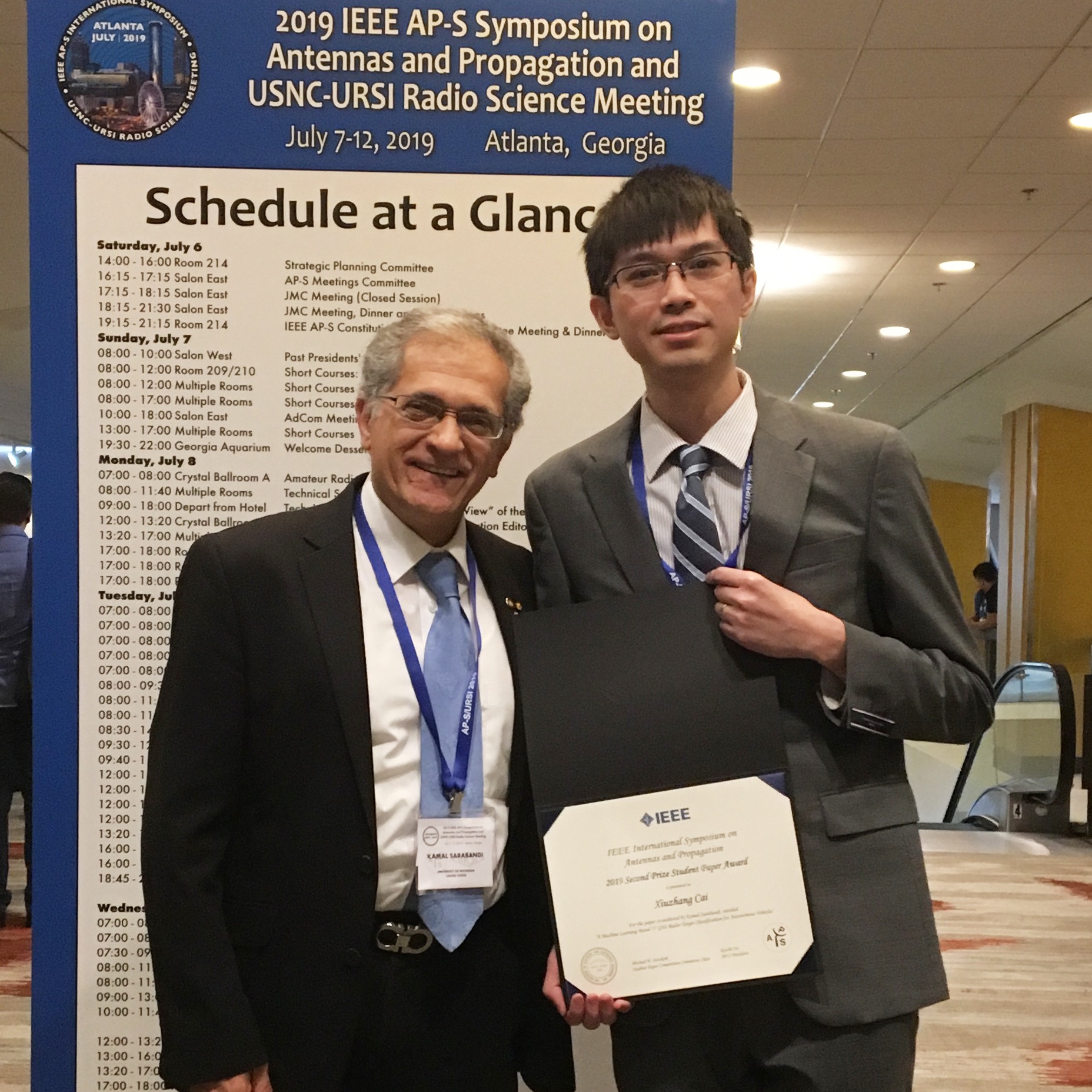Six teams of ECE researchers make the finals at AP-S/URSI 2019
Second Prize overall went to doctoral student Xiuzhang Cai for his radar target classification research applicable to autonomous vehicles.

 Enlarge
Enlarge
The results of the competition for best student papers presented at the 2019 IEEE International Symposium on Antennas and Propagation and USNC-URSI Radio Science Meeting have been announced, and Michigan electrical and computer engineering students took one of the top prizes and five honorable mentions.
AP-S/URSI is the premier international forum for state-of-the-art research in antennas and propagation and radio science. The impact of this research includes 5G communication, wireless networks, sensing and imaging systems, and autonomous vehicles.
Overall, there were 10 finalists, three of whom were prize winners, and 38 honorable mentions from the approximately 300 papers in the running. The worldwide researchers came from academia and industry.
Congratulations to the following individuals representing Michigan:
- Second Prize overall went to Xiuzhang Cai for the paper co-authored by Kamal Sarabandi, Rufus S. Teesdale Professor of Engineering and Director of the Radiation Laboratory, entitled “A Machine Learning Based 77 GHz Radar Target Classification for Autonomous Vehicles.”
The following individuals received Honorable Mentions for their research:
- “Full Wave Solutions of Multiple Scattering Using 3D Vector Cylindrical Wave Expansions In Foldy-Lax Equations,” by Huanting Huang, Prof. Leung Tsang, and Kung-Hau Ding (Air Force Research Laboratory)
- “Measuring GPS Transmit Antenna Pattern Using On-Orbit Receivers,” by Tianlin Wang, Prof. Christopher Ruf, Bruce Block, and Andrew O’Brien (Ohio State University)
- “Modified Floquet Scattering Matrix Method for Solving N-path Networks,” by Cody Scarborough and Prof. Anthony Grbic
- “Serrodyne frequency translation using time-modulated metasurfaces,” by Zhanni Wu and Prof. Anthony Grbic
- “Two-Port, Common Aperture, High-Isolation, Dual-Polarized Sub-Millimeterwave Antenna System Based on Spatial Power Divider,” by Tanner Douglas and Prof. Kamal Sarabandi
Historical sidenote with a Michigan connection:
An early history of the society, “The IEEE Antennas and Propagation Society 1949-1982,” was prepared by former Michigan faculty member and director of the Radiation Laboratory Ralph Hiatt in 1984, four years after he retired. URSI was founded in 1919.
 MENU
MENU 
